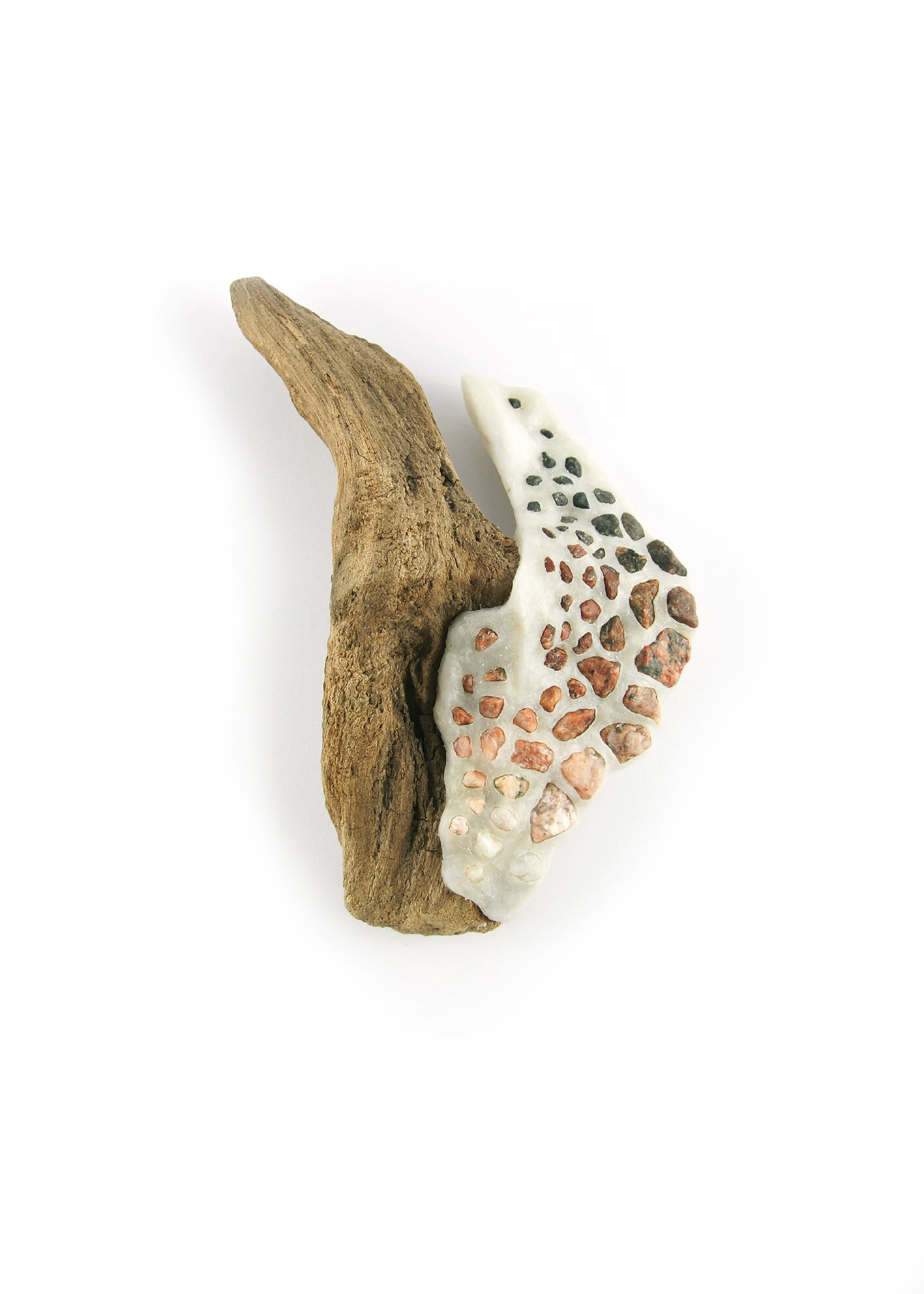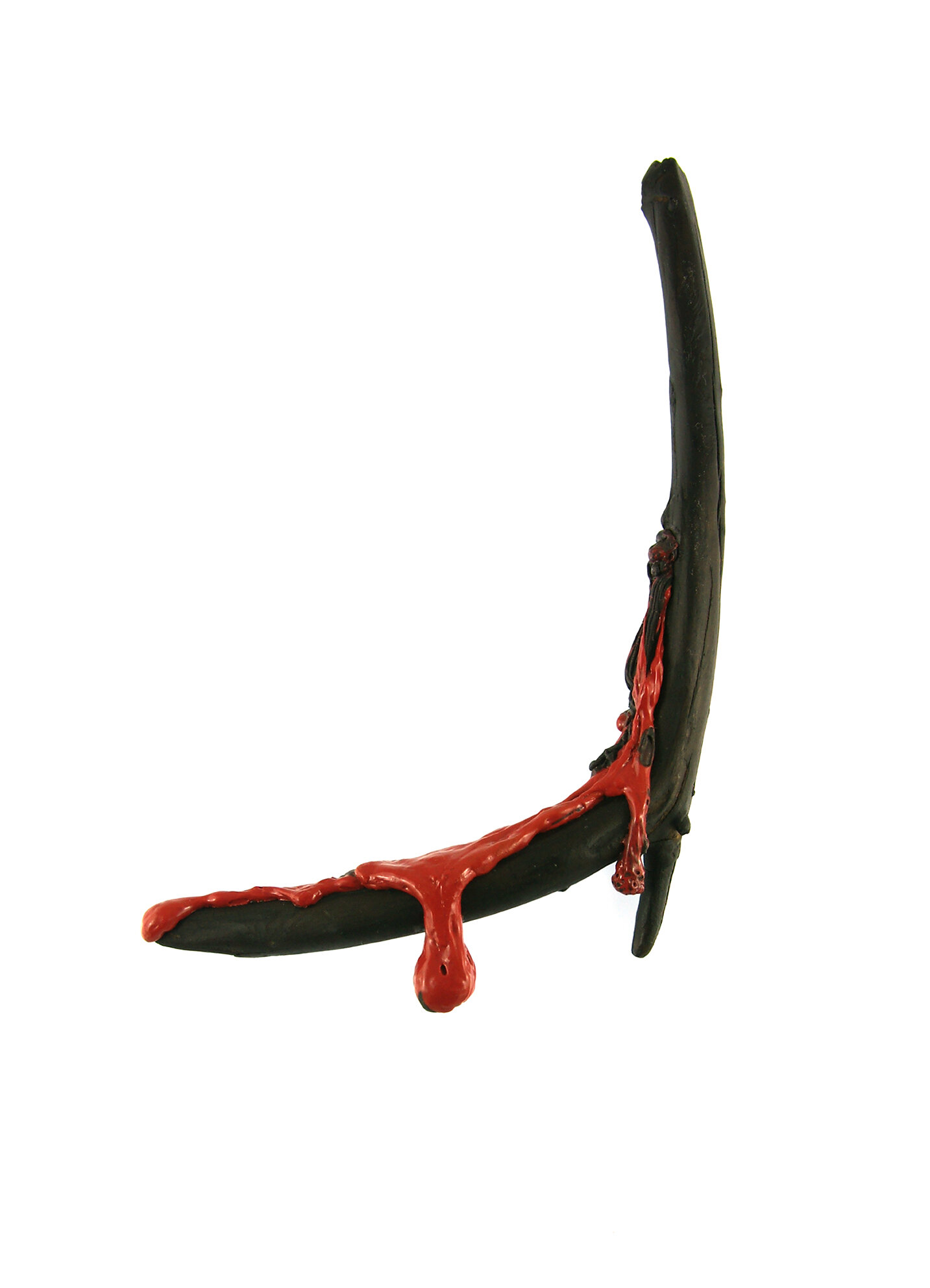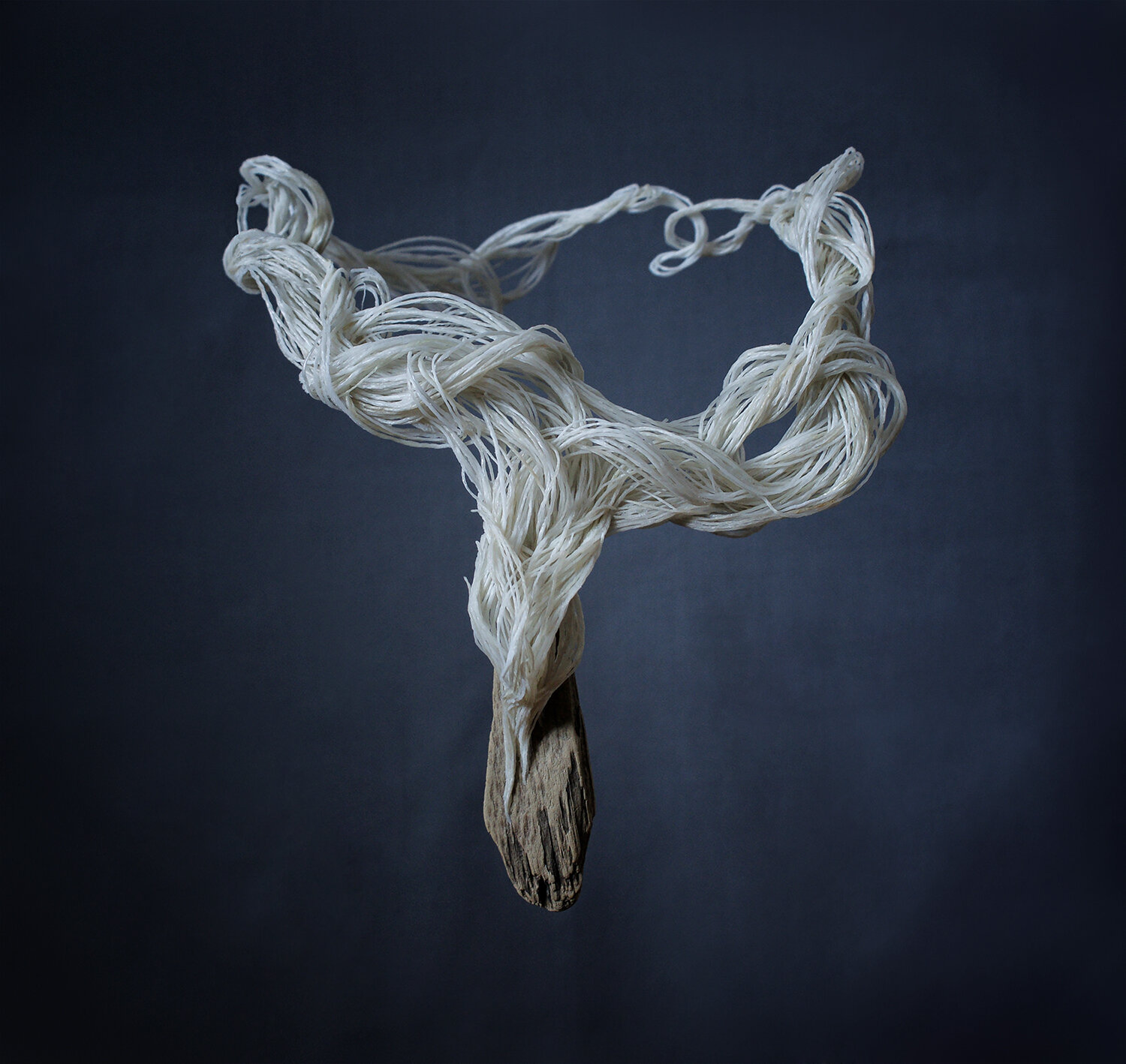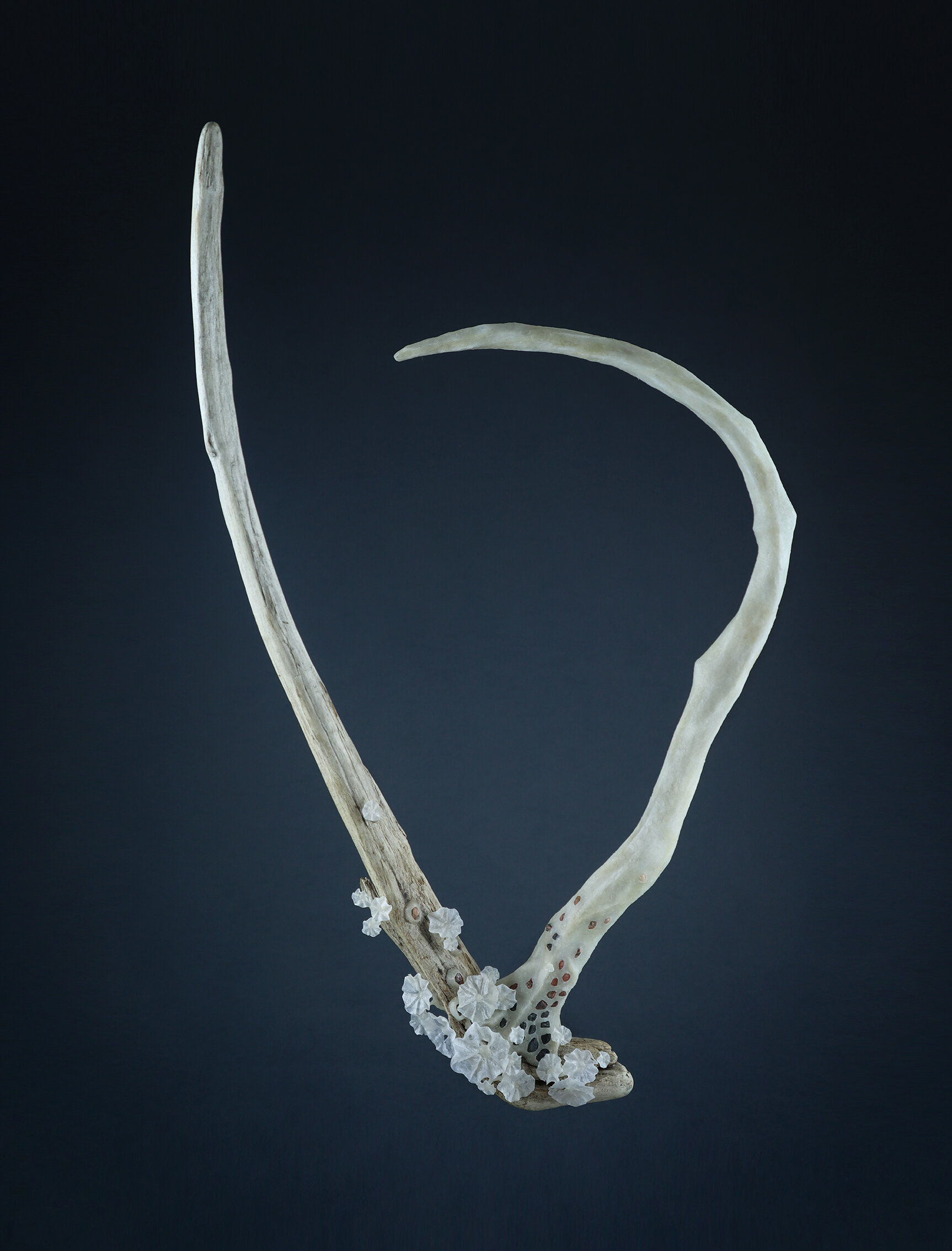The Blog Interviews feat. Wiebke Pandikow
Wiebke Pandikow - Necklace From The Tropaeolum Series
Wiebke Pandikow is an amazing jewellery artist, who I am thrilled to present to you in this edition of The Blog Interviews. I can’t exactly remember how I discovered her, but I recall being amazed by the fact that she uses plastic bags in her works because her pieces do not resemble the initial state of the material at all. The way she works with the plastic is so skilful that you would never guess what they are made of.
If you haven’t seen her work before, I highly recommend that you do (links are at the end) because you will be amazed by what you will see.
Now let’s get to know Wiebke a bit better and see how she ended up being a jewellery artist.
Give us some background (where you're from, where you live, where/what you have studied, anything relevant from your past that has brought you to where you are today).
I’m a German jewellery artist living and working in Helsinki, Finland. My education is a vocational education as a goldsmith, followed by a BA in jewellery design at Lahti University of Applied Sciences. As part of my studies, I also spent a 10-month exchange at Toyama University, Takaoka Campus in Takaoka, Japan, learning the basics of Japanese lacquer work, Urushi. It is this background that very much grounds me in traditional craftsmanship and the patience and diligence associated with it. I also love to delve deep into a material and its properties, playing, examining, testing until I find that certain something that I then want to use to make my pieces.
Wiebke Pandikow - Accumulation Twin
When I was a teenager I was certain that I would study biology. I grew up in a very small place in the middle of the forest and animals and nature have always interested me. At the same time, I have always been creative in some way, writing stories and drawing, so eventually, things turned out a little differently and Arts, Crafts and Design was what I happened to study in the end. Still, that childhood in the forest brought with it love and concern for the natural world that is very much visible in my pieces and informs their primarily environmental background. I have worked with plastic bags since 2014, transforming mainly thin, translucent plastic bags with the help of a clothes iron and a soldering iron.
Why contemporary jewellery?
Becoming a goldsmith was somewhat random. I had applied for graphic design but didn’t get in and then there was a vocational school offering goldsmithing degrees in the same city where I lived then and that sounded quite interesting so I applied there too and got in. I’m somewhat finicky by nature and the exactness that the usually small scale work of goldsmithing requires suited me well from the start. I stayed with it even when my focus shifted from traditional jewellery to more art and experimentally oriented work over time.
Jewellery’s connection to the body is interesting to me, as well as the different connotations of preciousness and decorating oneself attached to it. Especially the question of preciousness started to interest me already while studying. The little tree hugger in me questioned the ethics of precious materials and also wanted a clear environmental message for my work. While precious metals can be recycled virtually endlessly, the initial environmental and human cost in procuring them tends to be massive.
Wiebke Pandikow - Fountain
Non-precious materials have of course been in wide use especially in contemporary jewellery, but to imagine jewellery made from non-precious materials is still not that widespread in the general public. Using an outright waste material and transforming it into jewellery of all things, through very time-consuming processes and to the point that it is hardly recognizable anymore, still tends to awe people and shift their perspective on the material. That gives me an opening to talk about it, about its worth but also its dangers. To make people see it for the incredibly useful and malleable material it can be if used right and not just as a cheap, thoughtless, single-use-commodity.
What inspires you? How has your work changed from the very beginning?
As mentioned above already, the natural world around us and care for the environment are what inspires and drives me most. As for change, my working processes are quite slow and when I’ve found one technique that works for my material I stick with it for a while. I’ve been a jewellery artist for about 6 years so I think I’m still very much at the start and my artistic language isn’t yet that versatile. The biggest part of my work has been with the same kind of thin, translucent plastic bags, often adding them to wood and small stones, and can be grouped into about 3-4 bigger series. Having received two bigger working grants last year I have finally started to experiment more with coloured plastic bags though. I have started making some actual pieces with them but I’m still very much in the “find a technique that works” - phase, so there should be much more to come in that direction.Something that has changed is how I see my material. I started out with a stance against plastic, but the more I’ve used it and researched it I’ve realized that - as everything in this world, I suppose - things are never black or white. What to do and how to solve the problems our wasteful plastic consumption is causing can be very different depending on where and how one lives and there is no clear cut solution. Except maybe the need for reducing consumption generally, not only in respect to plastics - that is something I strongly believe in!
Wiebke Pandikow - Point Of Connection - Neckpiece
Are there any rules that you always follow in your work and ethics?
I try to reduce my impact on the environment as much as possible, in work and personal life, the two of which I find impossible to separate anyways (this might be universal for most artists). I buy very few things and only things I need or buy used if possible. I lend and borrow, repair or make myself. I try to keep waste to a minimum. And of course, I fail in those resolutions every once in a while. I try to evolve and learn new things and acquire new skills. Researching and practising something happens to also be a lot of fun to me and I believe that - be it crocheting or tanning fish leather or building a fence - anything could become part or influence a future piece of art at some point and no time spent learning a new technique will ever be wasted.
Any events coming up?
For the end of this year, my solo show By the Sea with jewellery art, sculpture and photography will be shown from 27th of August until 19th of September in the gallery Taidekeskus ITÄ in Lappeenranta, Finland. Some of my pieces will be featured in the exhibition Take the Plunge at Studio Elisabeth Habig in Vienna, Austria opening on September 17th and I will take part in the 5th Biennial of contemporary jewellery in Vilnius, Lithuania in October. Let’s hope corona doesn’t still interfere with those plans!
Where can we see your work? (galleries, shops, your social media accounts, website)
In above-mentioned events, as well as through my webpage, wpandikow.com, as well as on Instagram, @wpandikow, and Facebook under my trade name Silver Crane Jewellery.










